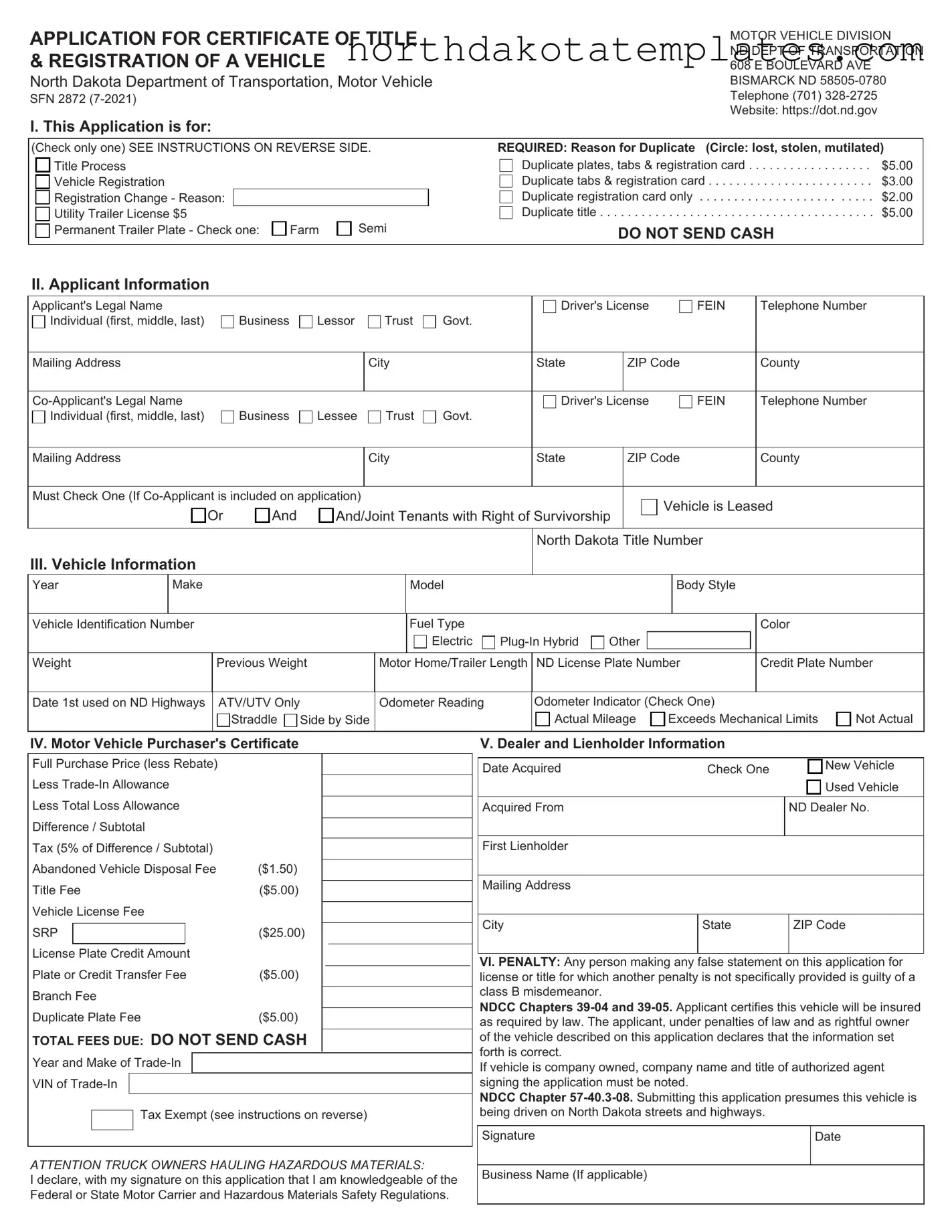Filling out the SFN 2872 form can be a straightforward process, but many individuals encounter challenges that can lead to mistakes. One common error is failing to check the appropriate box in Section I to indicate the reason for the application. It is essential to select only one option, whether it is for a duplicate title, registration, or other reasons. Neglecting this step can result in delays or even rejection of the application.
Another frequent mistake involves incomplete applicant information. In Section II, applicants must provide full details, including legal names, addresses, and contact numbers. Omitting any of this information can hinder the processing of the application. It is crucial to ensure that all fields are filled accurately to avoid unnecessary complications.
Many applicants also overlook the importance of providing accurate vehicle information in Section III. This includes details such as the Vehicle Identification Number (VIN), make, model, and year of the vehicle. Errors or omissions in this section can lead to problems in registering the vehicle or obtaining a title, potentially causing legal issues down the line.
Odometer readings are another area where mistakes often occur. Section III requires the odometer reading for vehicles manufactured in 2011 or later. Failing to provide this reading, or entering it incorrectly, can lead to legal ramifications, as it is essential for tracking mileage and ensuring compliance with state regulations.
In Section IV, applicants must accurately report the purchase price and any applicable fees. A common oversight is not including the correct tax information or failing to calculate the total fees due. This can result in the application being returned for correction, causing delays in obtaining the title or registration.
Additionally, many individuals neglect to sign and date the application in Section VI. A signature is a legal affirmation that the information provided is accurate. Without it, the application may be deemed incomplete, leading to further delays in processing.
Another mistake involves misunderstanding tax exemptions. In Section VII, applicants must enter the appropriate exemption number if claiming a tax exemption. Failing to do so, or entering the wrong number, can result in unexpected fees or complications with the application.
Lastly, applicants often forget to include the Damage Disclosure Statement (SFN 18609) for vehicles that are less than nine years old. This statement is crucial for compliance with state laws regarding vehicle damage disclosure. Omitting this document can lead to penalties and additional requirements to complete the application process.









 possession of the vehicle for less than one year, tax is due on the lease buyout amount.
possession of the vehicle for less than one year, tax is due on the lease buyout amount.